|
Autumn at Grazer Kunstverein
20 September – 16 November 2018
Dennis McNulty
TTOPOLOGY
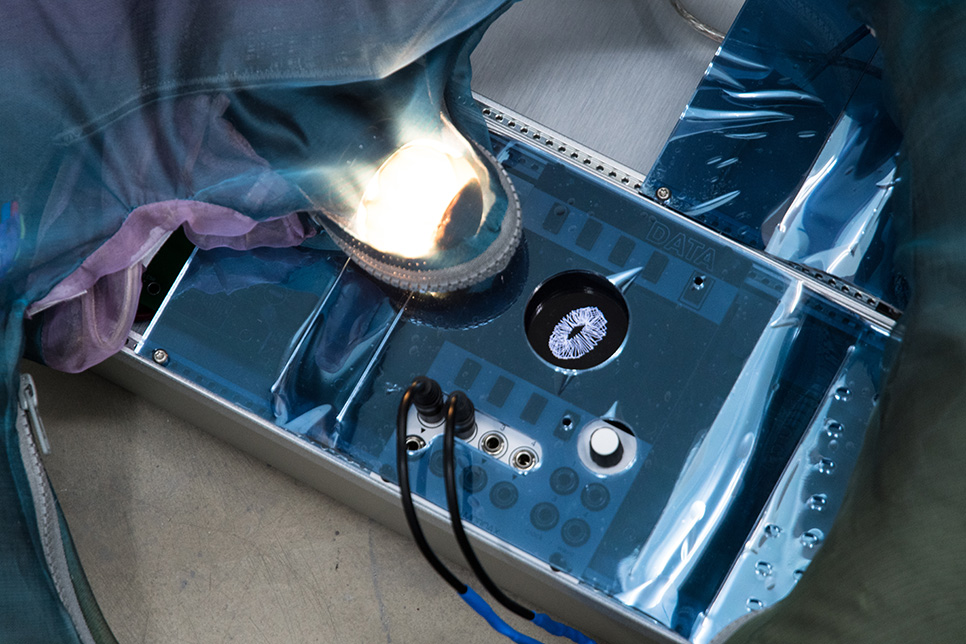
Dennis McNulty with Bea McMahon, See what surfaces, Autumn 2018, Grazer Kunstverein. Photography by Christine Winkler.
Dennis McNulty’s TTOPOLOGY is an evolving adaptive project that deals with the embodied experience of space and time within the built environment. Consisting of a series of sculptural works that extend into an audiovisual walk through the city, the project enacts a step by step excavation of reality. TTOPOLOGY activates the props and players, sentient or otherwise, who inhabit the covered walkways, underground passages, floating islands and vast, storied buildings of Graz. A midday tour (from Wednesday to Saturday throughout steirischer herbst) offers visitors the chance to experience the old city in a new way, encountering objects and scenarios along the route which are reconfigured to produce new associations and destabilise one’s habitual experience of time and space.

Dennis McNulty, installation view of TTOPOLOGY, Autumn 2018, Grazer Kunstverein. Photography by Christine Winkler.
Dennis McNulty’s TTOPOLOGY is an evolving adaptive project that deals with the embodied experience of space and time within the built environment. Consisting of a series of sculptural works that extend into an audiovisual walk through the city, the project enacts a step by step excavation of reality. Repeatedly employing forms such as the torus, the wave form, the arch and the infinite loop, McNulty uses physical and digital matter to explore topological thinking, bringing ideas around looping, connectedness and synchronicity to the surface.
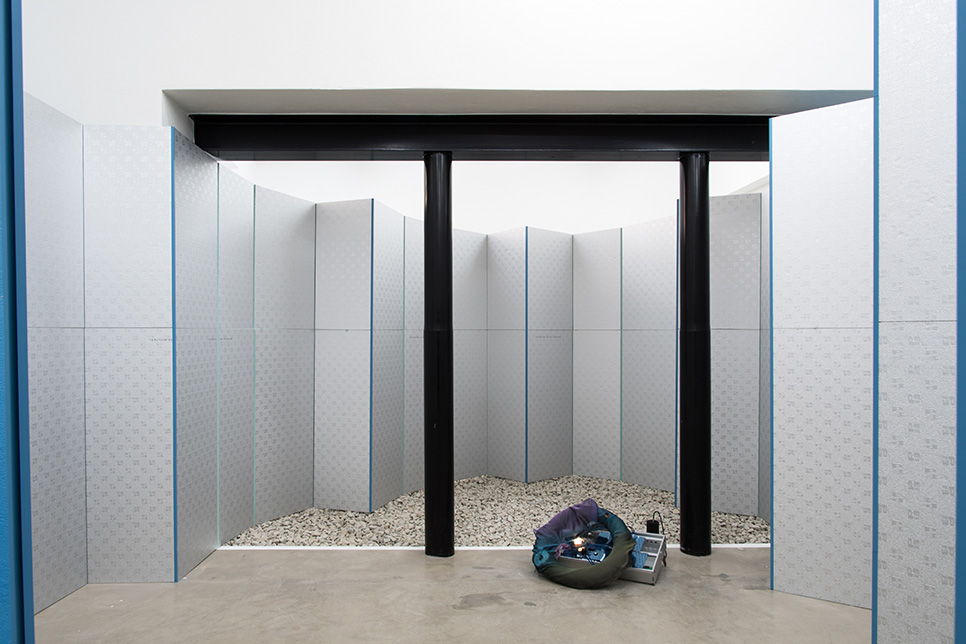
Dennis McNulty, installation view of TTOPOLOGY, Autumn 2018, Grazer Kunstverein. Photography by Christine Winkler.
McNulty works with what he calls AV Works and Staging Structures. AV Works are audiovisual artworks made of an assemblage of different media elements, both hardware and content, some of which are fixed and some of which are computer generated. AV Works often combine analogue and digital elements, and mark the artist’s attempt to dislocate timelines and collage protocols. Staging Structures are built in response to specific environments, to reorient spatial flows and/or to host AV Works.
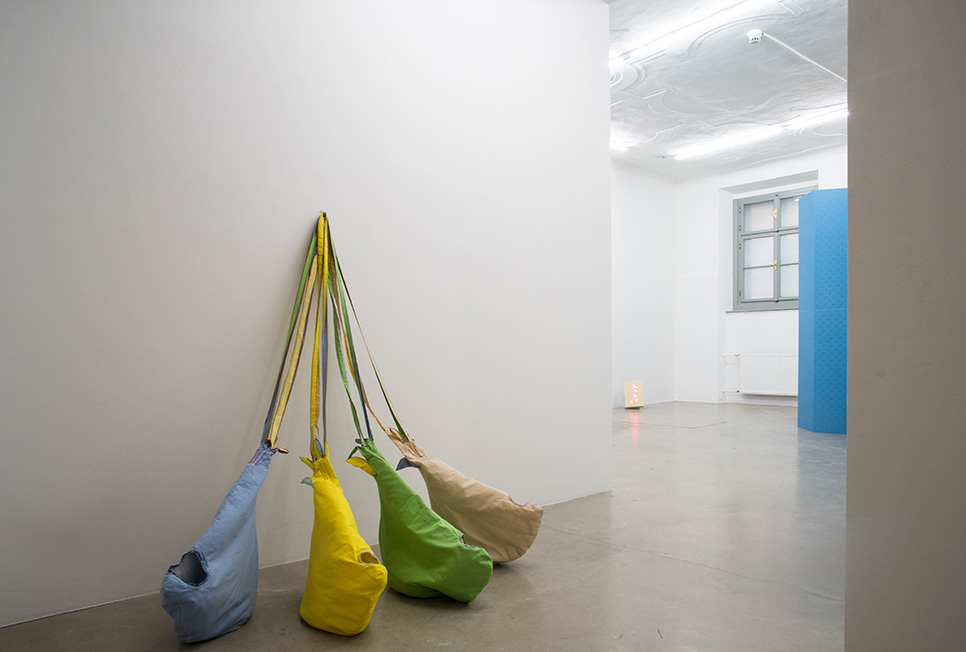
Dennis McNulty with Bea McMahon, Superhandedness (single element), Autumn 2018, Grazer Kunstverein. Photography by Christine Winkler.
Dennis McNulty (b. Galway, Ireland) is an artist, music-maker and engineer. His work is informed by his background in electronic music, his training as a structural engineer and his studies in psychoacoustics (sound perception). McNulty works with a diverse range of media, often employing custom built hardware and software to produce AV works, sculptural installation and performance. Recent projects include TTOPOLOGYat VISUAL, Carlow (2018); anginging at Assembly Point, London (2018); Homo Gestalt at Bluecoat, Liverpool Biennial (2016); Lofoten International Art Festival: Disappearing Acts, Svolvaer (2015); A Leisure Complex, Collective Gallery, Edinburgh/ Carnoustie (2014); and PROTOTYPES, Limerick City Gallery of Art (2014). Previous exhibitions include Performa 11 (2011), Encuentro de Medellin (2007) and the São Paulo Bienal (2008 and 2004). McNulty is artist in residence at CONNECT, Ireland’s research centre for future networks and communications where he is an active member of the Orthogonal Methods Group.
http://www.dennismcnulty.com

Dennis McNulty, The Moment Space, walking tour as part of TTOPOLOGY, Autumn 2018, Grazer Kunstverein. Photography by Thomas Raggam.
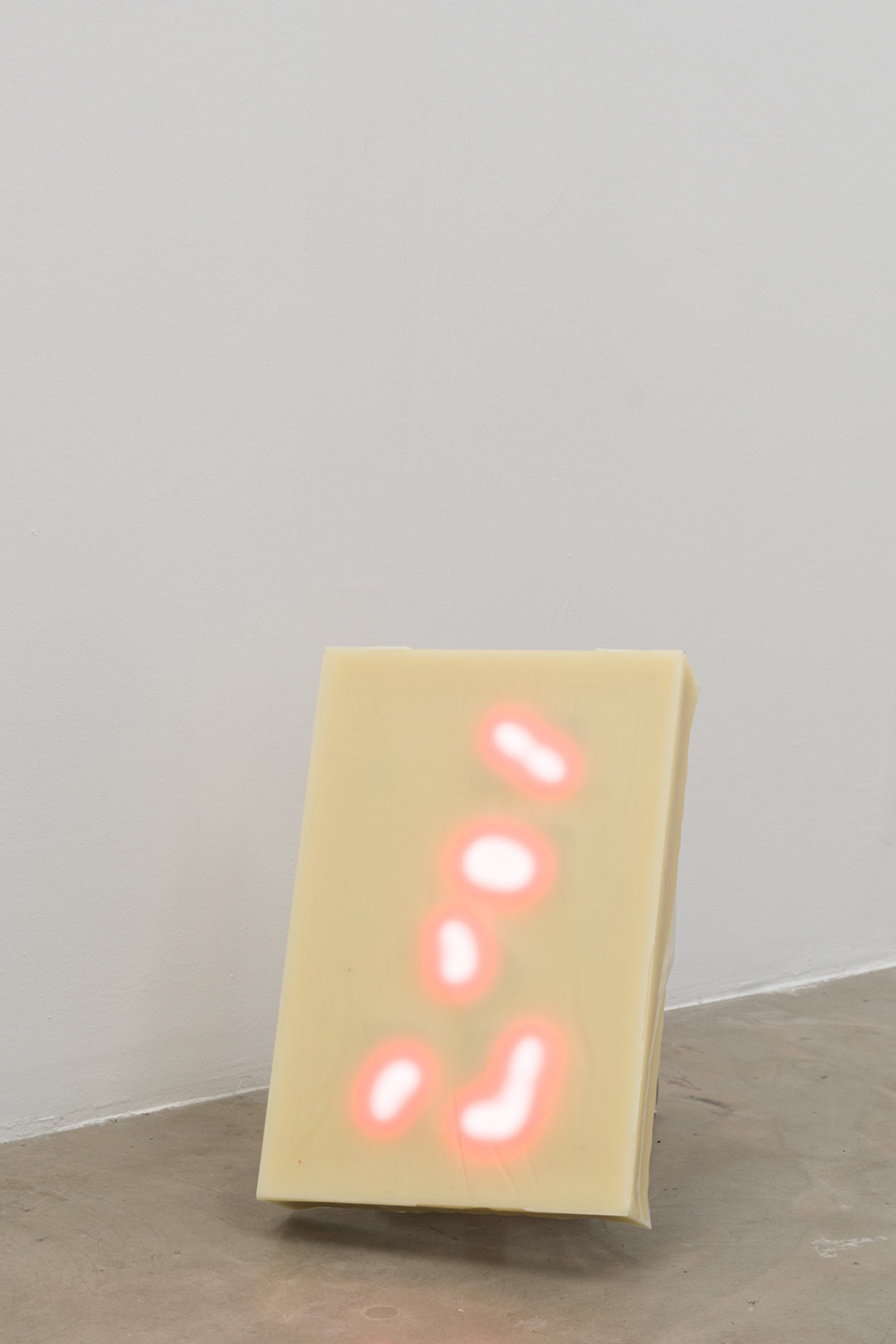
Dennis McNulty, Display model (demo mode), Autumn 2018, Grazer Kunstverein. Photography by Christine Winkler.
The artist would like to thank Emma Lucy O’Brien and Ann Mulrooney of VISUAL Carlow, Bea McMahon, Meche Jordan, Maeve Connolly, Colm Maguire, Müge Yilmaz, Fergal Brennan, Mick O’Hara (Firestation Artists’ Studios), Paul Murphy (Thermoair) and Federico Griggio (Tecnoinvest). He would also like to extend a special thanks to the CONNECT Centre for Future Networks and Communications, and in particular Linda Doyle and OMG, for their ongoing support.
TTOPOLOGY by Dennis McNulty is co-produced by Grazer Kunstverein and VISUAL Carlow, with the support of an Arts Council of Ireland Project Award.
Anne Tallentire
Plan (…)

Anne Tallentire, House, Autumn 2018, Grazer Kunstverein. Photography by Christine Winkler.
Anne Tallentire’s Plan (…) is an exhibition that builds on the artist’s ongoing concerns with precariousness and contingency in relation to the problematics of space and social agency. Tallentire’s approach is built on flux, mobility, observation and chance. She creates sculptural installations or spatial drawings by dismantling, re-figuring and re-ordering particular materials and systems, relating to a specific location, situation or social construction. Taking as her starting point the Terrassenhaussiedlung – an innovative residential complex in Graz – Tallentire engages in a meditation on structural detail. She explores dimensionality and mapping by using everyday building materials to transpose one physical space onto another. In representing abstractions of living and shared space, Tallentire questions the conditions that determine, regulate and shape patterns in daily life.
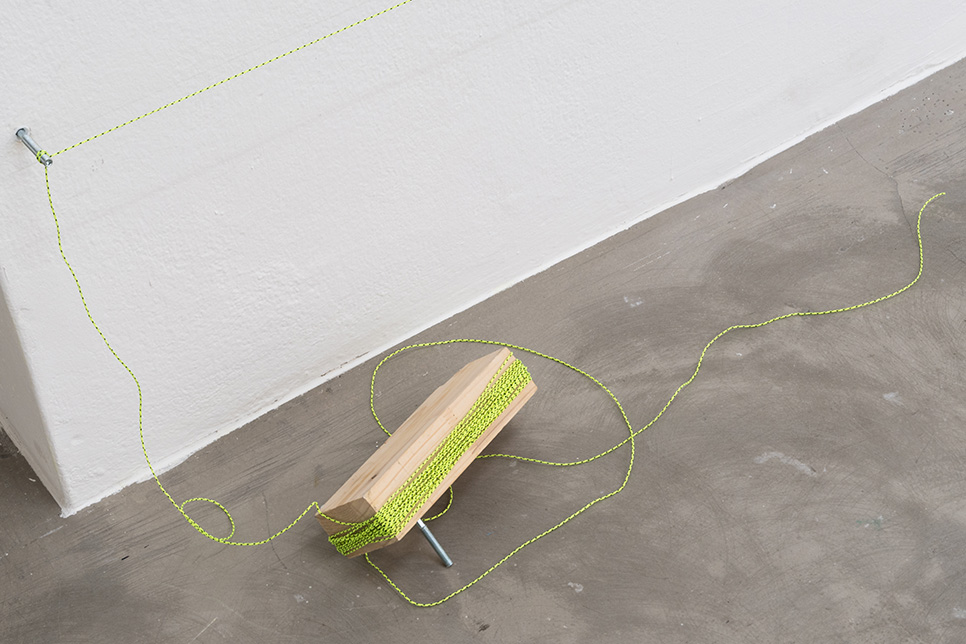
Anne Tallentire, installation view of Setting out, Autumn 2018, Grazer Kunstverein. Photography by Christine Winkler.
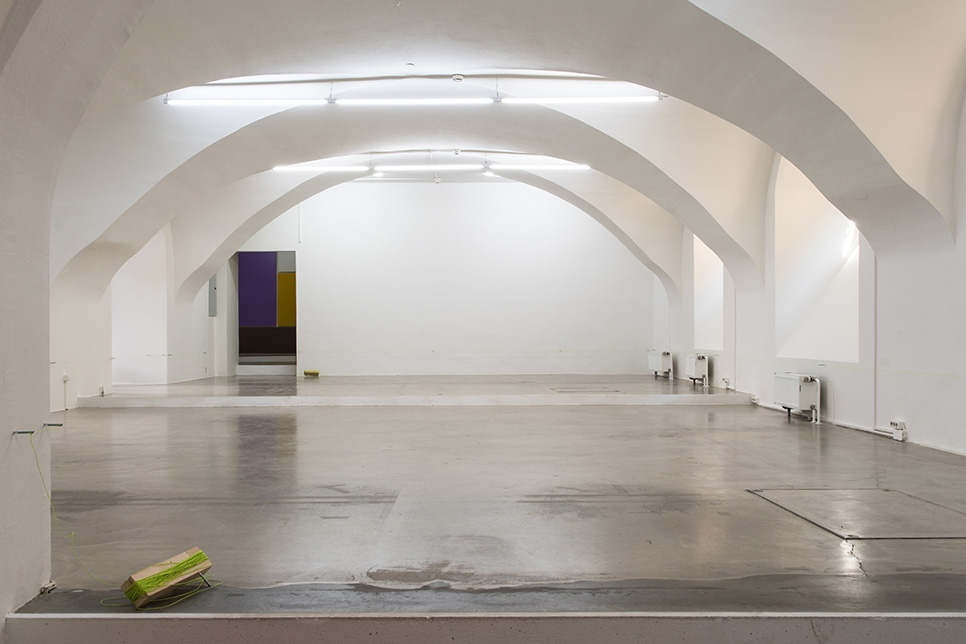
Anne Tallentire, installation view of Setting out, Autumn 2018, Grazer Kunstverein. Photography by Christine Winkler.

Anne Tallentire, installation view of Setting out, Autumn 2018, Grazer Kunstverein. Photography by Christine Winkler.
Conceived especially for the galleries of the Grazer Kunstverein, and working from existing living spaces and architectural plans, Tallentire explores the embodiment of space through a process of abstract material drawing, governed by a carefully constructed set of rules. Tallentire creates sculptural installations or spatial drawings by dismantling, re-figuring and re-ordering particular materials and systems, relating to a specific location, situation or social construction. The new works that make up the exhibition Plan (…) each build on Tallentire’s ongoing concerns with precariousness and contingency in relation to the problematics of space and social agency. Tallentire’s work often animates the dynamic between the specific and the generic and the consistent rhythm of people trying to find agency within that set of invisible constraints. Her approach is built on flux, mobility, observation and chance. She explores human embodiment and evidence of decisions through material means, thereby revealing a kind of invisible knowledge. In representing abstractions of living and shared space, Tallentire questions the conditions that determine, regulate and shape patterns in daily life.
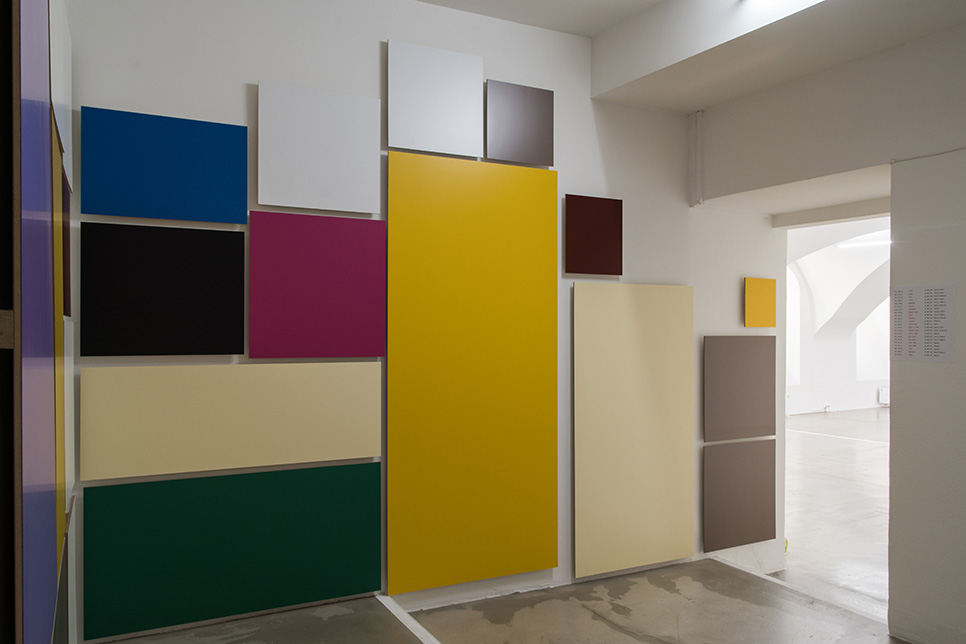
Anne Tallentire, installation view of Area, Autumn 2018, Grazer Kunstverein. Photography by Christine Winkler.
Anne Tallentire (b. Armagh, Northern Ireland) has lived and worked in London since 1986. Working across a range of media with assemblage, video, sound, text, performance and photography, her practice questions the significance of the mundane and overlooked in relation to specific political, cultural, social, and architectural contexts. Solo exhibitions and projects include Shelter, Nerve Centre, Derry (2017); AS FAR AS, Hollybush Gardens, London (2016); This and other Things, IMMA, Dublin (2010); Drift: diagram xiii, Void, Derry (2002); Dispersal (work-seth/tallentire), Orchard Gallery, Derry (2001); and Instances representing Ireland at the Venice Biennale (1999). Group shows include Truth 24 Frames per second, Dallas Museum of Art (2017); Keywords: Art, Culture and Society in 1980’s Britain, Tate Liverpool (2014); At your service, Technisches Museum, Vienna (2013); Winter Garden, Flat time House, London (2014); Le Monde Physique, La Galerie, CAC, Noisy-Le-Sec, Paris (2011); and Neue Welt, Frankfurter Kunstverein, Frankfurt (2001). Tallentire is Professor Emeritus of Fine Art at Central Saint Martins, London where she taught from the early 90’s until 2014. She is represented by Hollybush Gardens, London.
http://www.annetallentire.info

Anne Tallentire, installation view of Grasp, Autumn 2018, Grazer Kunstverein. Photography by Christine Winkler.
Anne Tallentire would like to extend her thanks to Eugen Gross, Werkgruppe Graz, Andrea Jany, Hubert Rieß, Gráinne Hassett, Yve Lomax, Cordelia Mayfield, and Uriel Orlow.
Anne Tallentire is supported by the Arts Council of England through the Artists’ International Development Fund.
Department of Ultimology
What Where

Department of Ultimology, What Where, as part of Volksfronten, steirischer herbst, Autumn 2018, Grazer Kunstverein. Photography by Liz Eve.
What Where is a new project by the Department of Ultimology. Ultimology is the study of that which is dead or dying, absent or endangered. As a methodology for creative and critical analysis, it is being applied to the cultural calendars of the people of Graz and Styria, in an attempt to measure the relationships individuals have with specific moments, events, traditions, rituals and practices unique to their environment. For example the project studies, amongst other things, the maintenance of traditional Styrian costumes (Trachten). A tailor-made questionnaire is available for visitors to reflect on folk or cultural elements specific to their own experience. Influenced by the structuring power of the seasons, the project takes its title from the last known play by Samuel Beckett, commissioned by steirischer herbst festival in 1983.
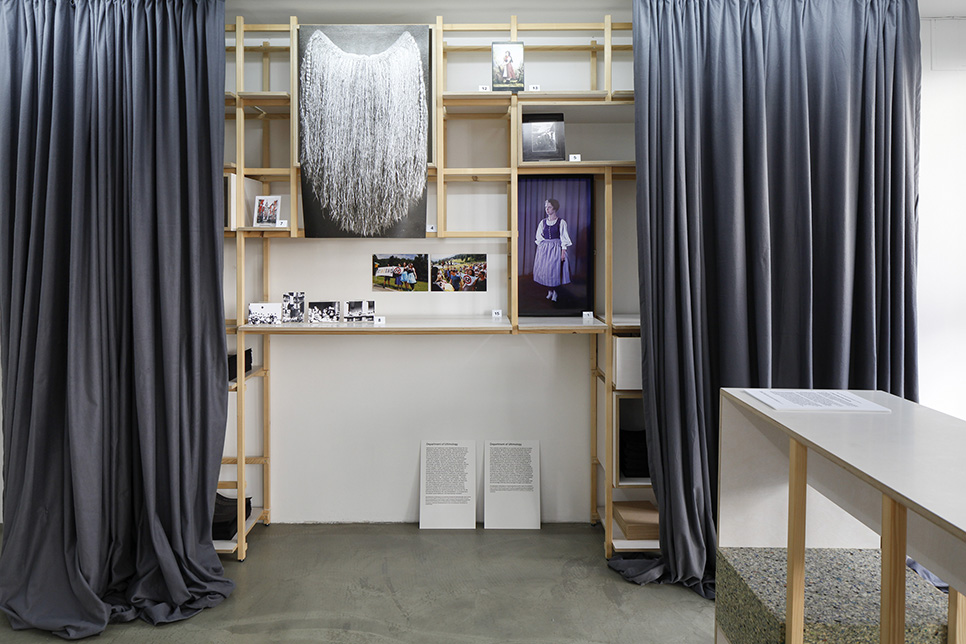
Department of Ultimology, What Where, as part of Volksfronten, steirischer herbst, Autumn 2018, Grazer Kunstverein. Photography by Liz Eve.

Department of Ultimology, What Where, as part of Volksfronten, steirischer herbst, Autumn 2018, Grazer Kunstverein. Photography by Liz Eve.
The first Department of Ultimology was established by Fiona Hallinan and Kate Strain as a university department in 2016 at Trinity College Dublin, Ireland. It continues to operate from its headquarters there at CONNECT Centre for Future Networks and Communications. In 2018, in cooperation with steirischer herbst, Volksfronten, the department established an Ultimology Working Group with artists/ researchers Nina Höchtl and Julia Wieger, based here at Grazer Kunstverein.
http://www.departmentofultimology.com

Department of Ultimology, What Where, as part of Volksfronten, steirischer herbst, Autumn 2018, Grazer Kunstverein. Photography by Liz Eve.
Nina Höchtl (b. Stockerau, Austria) explores the practice of fiction-making as a political process in art, literature, politics, history, and popular culture, with an emphasis on feminist, queer, post- and de(s)colon/ial/ izing theories and practices. This interest is closely intertwined with questions of linguistic, cultural and socio-political processes of transformation and translation, her role as an artist within them and the privileges she may lack or have as a result of gender, race, class, ethnicity, age, education and profession.

Department of Ultimology, What Where, as part of Volksfronten, steirischer herbst, Autumn 2018, Grazer Kunstverein. Photography by Liz Eve.
Julia Wieger (b. Vienna, Austria) works in art and architecture. Her work is concerned with queer feminist productions of space, archive politics, and history writing, as well as collective approaches to research, knowledge production, and design. She taught/worked/researched at the Academy of Fine Arts Vienna and the IZK at TU Graz. From 2014–16 she was part of the transdisciplinary research project “Spaces of Commoning” at the Academy of Fine Arts Vienna. Höchtl and Wieger are co-founders of the Secretariat for Ghosts, Archival Politics and Gaps in 2012.

Department of Ultimology, What Where, as part of Volksfronten, steirischer herbst, Autumn 2018, Grazer Kunstverein. Photography by Liz Eve.
What Where by the Department of Ultimology is commissioned by steirischer herbst 2018, Volksfronten, and produced by steirischer herbst and Grazer Kunstverein.
Triple Candie
If Michael Asher part III

Triple Candie, installation view of If Michael Asher part III, Autumn 2018, Grazer Kunstverein. Photography by Thomas Raggam.
Part III of Triple Candie’s engagement with Grazer Kunstverein was physically located on the exterior façade of the Grazer Kunstverein. According to Triple Candie, Asher’s projects were often perceptibly subtle, temporary interventions into the physical environment in or around a museum or gallery that called attention to or questioned the “institution” of art. This speculative intervention in Asher’s spirit will disappear into its surroundings while reflecting on the intangible bedrock of the Grazer Kunstverein, its mission. Part III of Triple Candie’s engagement with Grazer Kunstverein (on view 22 September – 16 November) was accompanied by the following process note:
The Grazer Kunstverein presents itself on its website as ‘operating in strong dialogue with international currents in contemporary art’ and working with ‘artists from Austria and all over the world.’ As evidence of this commitment, it lists the artists’ countries of origin in their biographies. These facts prompt two questions for us: ‘How does the international program influence our understanding of the art on view?’ And, ‘How is the significance of either, specifically in the context of the Grazer Kunstverein, altered by Austria’s recent rightward political turn?’
Our proposal is to insert a steel flagpole into an existing bracket to the left of the main entrance to Grazer Kunstverein, in the Palais Trauttmansdorff courtyard at 4 Burggasse. Being an apparatus rather than an expressive object, the pole will likely go unnoticed by visitors. It will bear a rope halyard for the raising and lowering of a flag, indicating its potential to serve the causes of nationalism. For the installation’s duration, however, the pole will remain flag-less.
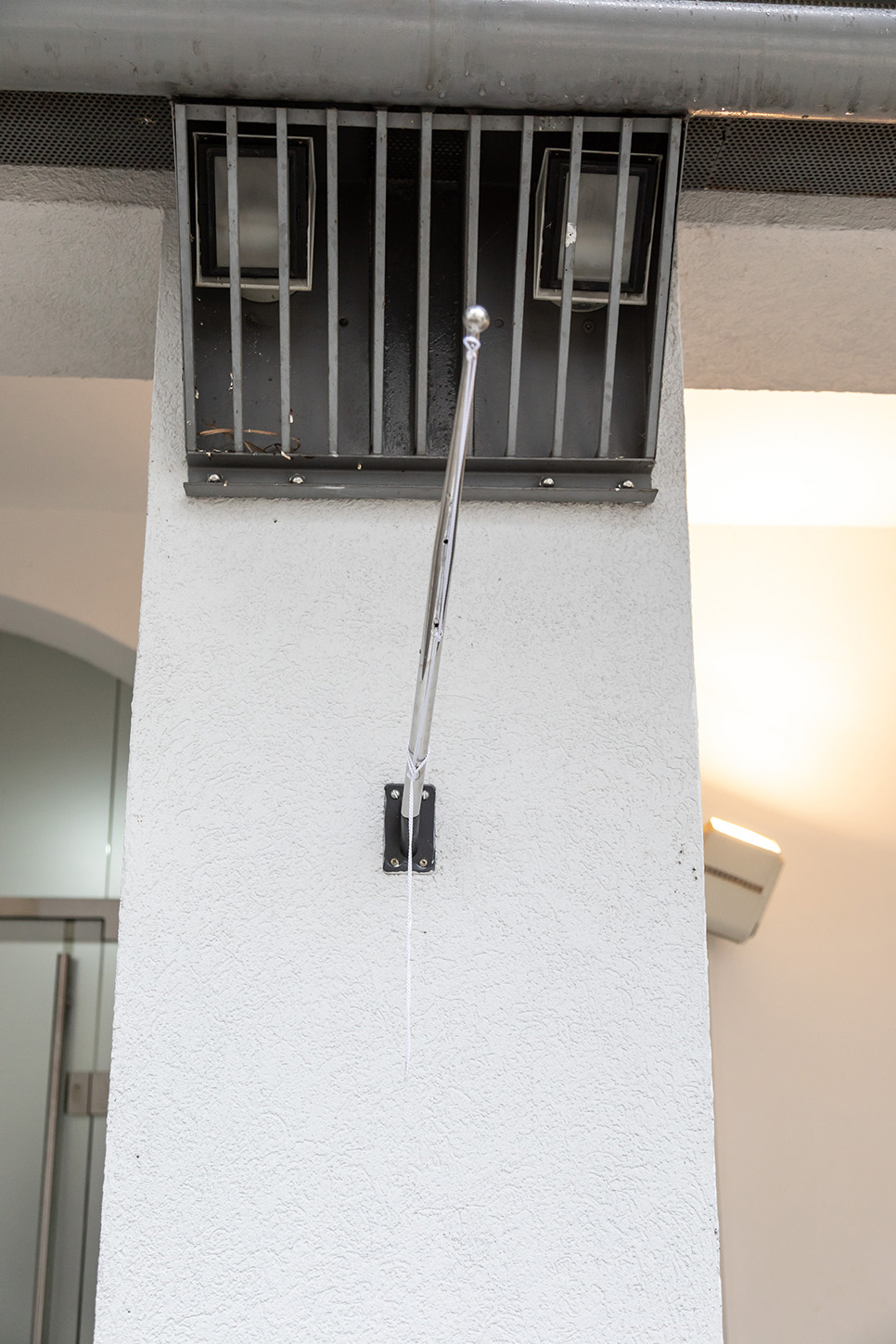
Triple Candie, installation view of If Michael Asher part III, Autumn 2018, Grazer Kunstverein. Photography by Thomas Raggam.
Triple Candie is a US-based, avant-garde curatorial production agency that collaborates with museums and contemporary art spaces on exhibitions about art but generally devoid of it. From 2001 to 2010, it had a gallery in Harlem. Since then, it has presented projects in Australia, Europe, and the United States at such venues as Chateau Shatto, Los Angeles; Deste Foundation, Athens; Gertrude Contemporary, Melbourne; Museum of Contemporary Art Detroit; Project Arts Centre, Dublin; and Utah Museum of Contemporary Art, Salt Lake City. Surveys of Triple Candie’s work have appeared at FRAC Île-de-France/ Le Plateau, Paris (2012) and Addison Gallery of American Art, Andover, Massachusetts (2017).
http://www.triplecandie.org
|
![]()
![]()